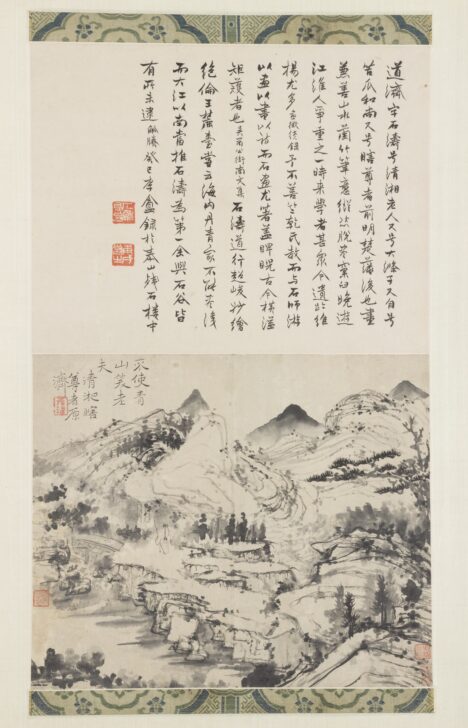Old Man and The Green Mountain (Ch’ing-shan lao-fu)
Shitao (Shih-t'ao)

Description
Gallery Rotation Winter 2014
Shi Tao
China, 1642–1707
Old Man and The Green Mountain
Qing dynasty (1644–1912)
circa 1671 - 1707
Hanging scroll, ink on paper
Museum purchase, 1959/2.82
Shi Tao was born in the last years of the Ming dynasty (1368–1644), just before it fell to the invading armies of the Manchus, a semi-nomadic northern people who established the Qing dynasty. A descendant of the Ming imperial family, he was brought up at a Buddhist monastery in the chaos following the creation of the new empire. Shi was one of the Individualist painters—a group of artists who sought to distinguish themselves from their Orthodox contemporaries committed to preserving Chinese tradition by replicating the styles of earlier masters. The Individualists were often loyal to the fallen Ming dynasty and lived as recluses to express their opposition to the new regime. Though influenced by their predecessors, they valued innovation over imitation, focusing on the expressive potential of painting through the use of free brushwork. In this painting Shi Tao rebels against traditional ideas of beauty by playing with scale and juxtaposing various styles. He also draws attention to the act of painting through the use of impressionistic brushstrokes, often so ambiguous that it is difficult to determine whether they are describing paths, rocks, or trees. Shi Tao was one of the most important Individualist painters of the early Qing dynasty; the inscriptions accompanying this painting are by art historians celebrating his achievements.
Though presently mounted as a hanging scroll, this painting was probably once an album leaf. The subject is the Taoist or Buddhist recluse, which Shi Tao painted often. Here the artist has signed the painting with his monastic names Yuanji (“Origin of Salvation”) and Xia Zun Zhe (“Honorable Blind One”).
Subject Matter:
The subject is the Taoist or Buddhist recluse, which Shi Tao painted often. Here the artist has signed the painting with his monastic names Yuanji (“Origin of Salvation”) and Xia Zun Zhe (“Honorable Blind One”). The text above the image is an accompaniment written by art historians praising Shitao's work.
Physical Description:
An ink painting of a mountainscape with hills and abstract paths. Trees are depicted in darker shades, though most do not hold any detail. The image is in the lower half of the hanging scroll, and the upper half is covered with text. The image is entirely grey-scale.
Usage Rights:
If you are interested in using an image for a publication, please visit https://umma.umich.edu/request-image/ for more information and to fill out the online Image Rights and Reproductions Request Form.